Greetings! I'm Aneesh Sreedharan, CEO of 2Hats Logic Solutions. At 2Hats Logic Solutions, we are dedicated to providing technical expertise and resolving your concerns in the world of technology. Our blog page serves as a resource where we share insights and experiences, offering valuable perspectives on your queries.

Inventory represents the largest investment for most e-commerce businesses, yet it’s often managed using outdated methods that drain profitability. Smart retailers are discovering that predictive analytics doesn’t just improve inventory accuracy; it fundamentally transforms how businesses operate.
From reducing working capital requirements to eliminating stockouts, the right analytical approach can deliver measurable improvements to your bottom line within weeks of implementation.
What Is Predictive Analytics in Inventory Management?
Predictive analytics transforms raw data into actionable insights about future inventory requirements. Unlike traditional methods that rely on gut feelings or simple historical averages, predictive analytics considers multiple variables simultaneously: sales trends, seasonal patterns, market conditions, promotional activities, and external factors like weather or economic indicators.
At its core, predictive analytics uses machine learning algorithms to identify patterns in your data that humans might miss. These algorithms continuously learn and improve, making your inventory predictions more accurate over time.
Key Algorithms Powering Inventory Predictions
Time Series Forecasting
Time series algorithms analyze historical sales data to identify trends, seasonality, and cyclical patterns. Popular methods include:
- ARIMA (AutoRegressive Integrated Moving Average): Excellent for identifying trends and seasonal patterns
- Exponential Smoothing: Gives more weight to recent data points, ideal for products with changing demand patterns
- Prophet: Developed by Facebook, this algorithm handles seasonality and holidays exceptionally well
Machine Learning Models
- Random Forest: Combines multiple decision trees to improve prediction accuracy
- Neural Networks: Particularly effective for complex, non-linear relationships in data
- Support Vector Machines: Great for handling multiple variables simultaneously
Want to implement these algorithms without the technical complexity?
Applications of Predictive Analytics in Inventory Management
From demand forecasting to automated reordering, predictive analytics applications in inventory management deliver measurable improvements in efficiency, accuracy, and profitability.
1. Demand Forecasting
Accurate demand forecasting is crucial for maintaining optimal inventory levels. Predictive analytics enhances traditional forecasting by:
Incorporating Multiple Data Sources
Instead of relying solely on historical sales, modern predictive models consider:
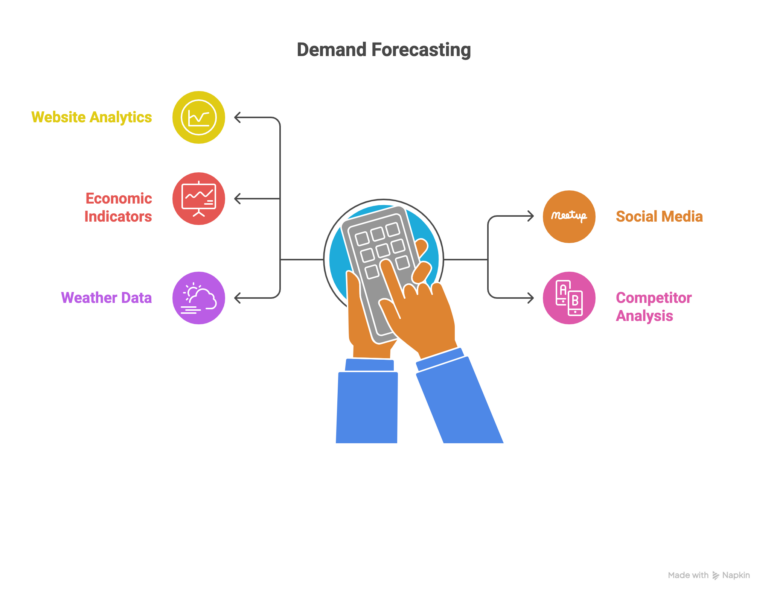
- Website traffic patterns and conversion rates
- Social media sentiment and trends
- Economic indicators and market conditions
- Competitor pricing and promotions
- Weather data for weather-sensitive products
Dynamic Forecasting
Traditional forecasting often produces static predictions. Predictive analytics creates dynamic forecasts that update in real-time as new data becomes available. This means your inventory predictions become more accurate as you approach the actual sales period.
SKU-Level Granularity
Advanced predictive models can forecast demand at the individual product level, considering factors like:
- Product lifecycle stage
- Cross-selling and bundling effects
- Cannibalization between similar products
- Price elasticity and promotional sensitivity
2. Seasonal Planning
Seasonal fluctuations can devastate unprepared retailers. Predictive analytics transforms seasonal planning from guesswork into science.
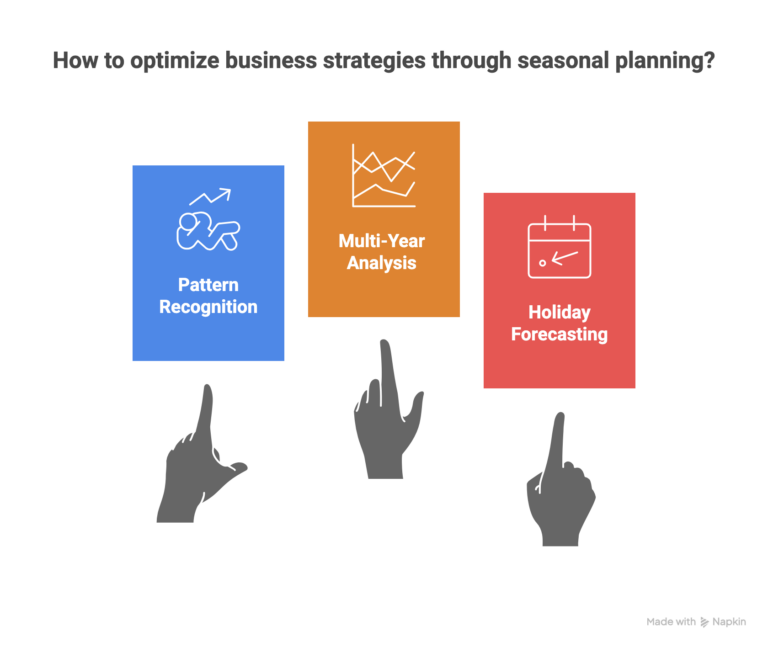
Pattern Recognition
Algorithms can identify subtle seasonal patterns that might not be obvious to human analysts. For example:
- Micro-seasons within traditional seasons
- Shifting seasonal patterns due to climate change
- Cultural and regional variations in seasonal demand
Multi-Year Analysis
By analyzing multiple years of data, predictive models can distinguish between one-time events and recurring patterns. This helps avoid overreacting to anomalous seasons.
Holiday and Event Forecasting
Advanced models incorporate external calendars and events:
- National holidays and their impact on different product categories
- Local events and their regional effects
- Promotional periods and their historical performance
3. Stockout Prevention
Stockouts don’t just mean lost sales; they damage customer relationships and can permanently drive customers to competitors.
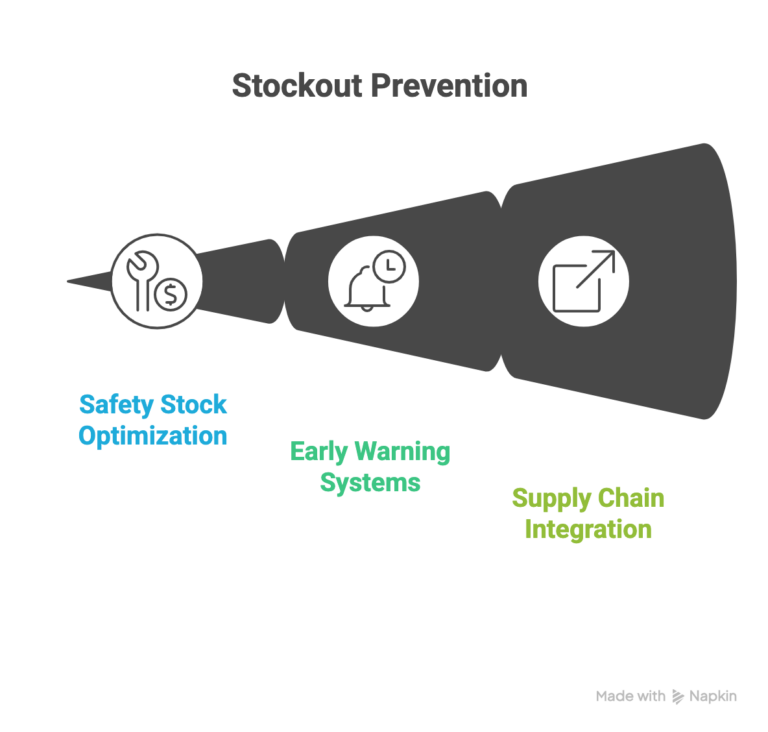
Safety Stock Optimization
Predictive analytics calculates optimal safety stock levels by considering:
- Demand variability and uncertainty
- Lead time variations from suppliers
- Service level targets
- Cost of stockouts vs. holding costs
Early Warning Systems
Advanced systems can predict potential stockouts weeks in advance, giving you time to:
- Expedite orders from suppliers
- Adjust marketing campaigns to manage demand
- Implement substitute product recommendations
- Communicate proactively with customers
Supply Chain Integration
By integrating with supplier data, predictive models can account for:
- Supplier reliability and lead time variations
- Raw material availability
- Shipping disruptions and delays
- Quality issues that might affect usable inventory
Tired of losing sales to stockouts?
4. Overstock Reduction
Excess inventory is expensive. It ties up working capital, increases storage costs, and risks obsolescence.
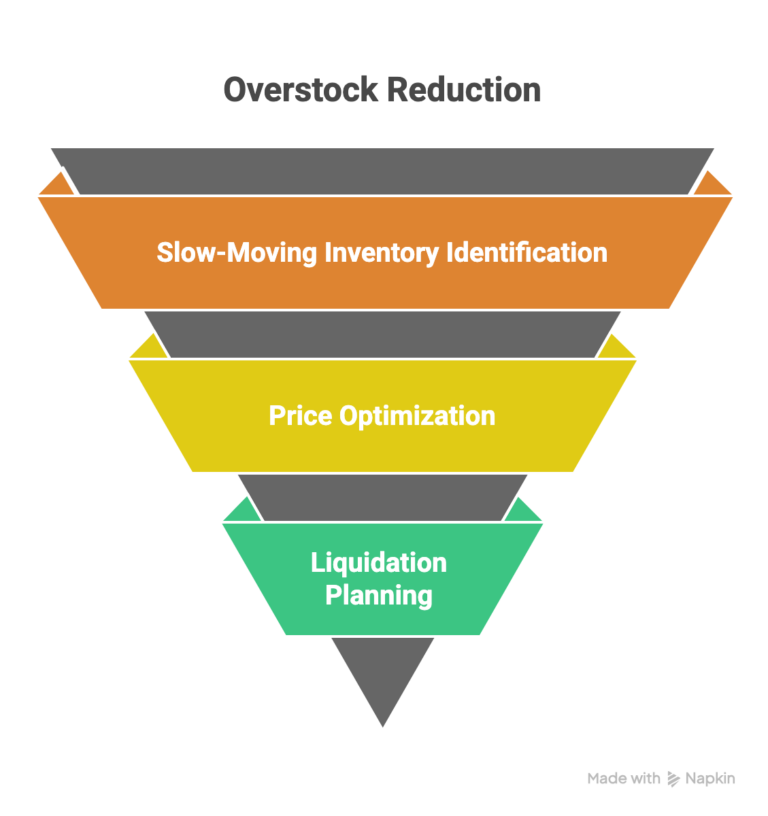
Slow-Moving Inventory Identification
Predictive analytics can identify slow-moving products before they become a problem by analyzing:
- Sales velocity trends
- Market saturation indicators
- Competitive landscape changes
- Product lifecycle indicators
Price Optimization
When overstock is unavoidable, predictive models help determine optimal markdown strategies:
- Price elasticity modeling to predict sales response to discounts
- Timing optimization for maximum clearance impact
- Channel-specific pricing strategies
Liquidation Planning
For severely overstocked items, analytics can help plan efficient liquidation:
- Optimal liquidation channels (clearance sales, third-party platforms, bulk sales)
- Timing strategies to minimize losses
- Impact assessment on brand perception
Practical Implementation Strategies
Understanding predictive analytics concepts is one thing; successfully implementing them in your business is another challenge entirely.
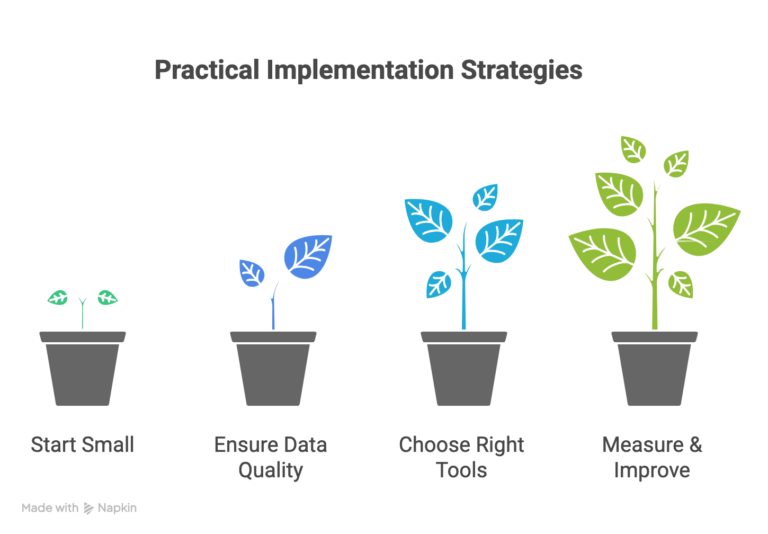
Start Small, Scale Gradually
Begin with your highest-volume or most critical products. This allows you to:
- Test and refine your predictive models
- Demonstrate ROI before larger investments
- Build internal expertise and confidence
Data Quality is Crucial
Predictive analytics is only as good as your data. Ensure you have:
- Clean, consistent historical sales data
- Accurate inventory records
- Reliable supplier and lead time data
- Integration between different systems
Choose the Right Tools
Options range from Excel-based solutions to enterprise-grade platforms:
- Entry-level: Excel with statistical add-ins, Google Sheets
- Mid-market: Tableau, Power BI with predictive features
- Enterprise: SAP IBP, Oracle Demand Planning, specialized solutions like Lokad or Blue Yonder
Measure and Improve
Track key metrics to assess your predictive analytics success:
- Forecast accuracy improvement
- Inventory turnover rates
- Stockout frequency reduction
- Overstock cost savings
- Working capital efficiency
Common Challenges and Solutions
While implementing new strategies often brings significant benefits, it also introduces predictable challenges that can derail progress if not addressed proactively. A few of these include the following:
Data Integration Issues
Challenge: Disparate systems with inconsistent data formats
Solution: Invest in data integration tools and establish data governance standards
Algorithm Selection Complexity
Challenge: Choosing the right algorithm for your specific business
Solution: Start with simple models and gradually increase complexity based on results
Change Management
Challenge: Staff resistance to data-driven decision making
Solution: Provide training and demonstrate quick wins to build confidence
Future of Predictive Inventory Management
Emerging technologies are making predictive analytics even more powerful:
- AI and Deep Learning: Handling more complex patterns and relationships
- Real-time Analytics: Instant adjustments based on current conditions
- IoT Integration: Physical sensors providing real-time inventory data
- External Data Sources: Weather, social media, economic indicators
Ready to Transform Your Inventory Management?
Predictive analytics isn’t just for large enterprises anymore. With cloud-based solutions and user-friendly tools, businesses of all sizes can harness the power of data-driven inventory management.
The question isn’t whether you can afford to implement predictive analytics, it’s whether you can afford not to. Your competitors are likely already using these tools to gain advantages in efficiency, customer satisfaction, and profitability.
Join 500+ eCommerce businesses already using predictive analytics to optimize their inventory. Schedule your free demo today.
FAQ
How accurate are predictive analytics forecasts for inventory?
Most businesses see forecast accuracy improvements of 20-40% when implementing predictive analytics. While accuracy varies by industry and product type, advanced algorithms can achieve 85-95% accuracy for stable products and 70-85% for new or volatile items.
What data do I need to start using predictive analytics for inventory?
You need at least 12-24 months of historical sales data, inventory levels, and basic product information. Additional data like website traffic, marketing campaigns, seasonality patterns, and supplier lead times will improve accuracy but aren't required to get started.
How long does it take to see results from predictive inventory analytics?
Most businesses see initial improvements within 4-8 weeks of implementation. However, algorithms continue learning and improving over time, with optimal results typically achieved after 3-6 months of data collection and model refinement.
Table of contents
- What Is Predictive Analytics in Inventory Management?
- Key Algorithms Powering Inventory Predictions
- Applications of Predictive Analytics in Inventory Management
- Practical Implementation Strategies
- Common Challenges and Solutions
- Future of Predictive Inventory Management
- Ready to Transform Your Inventory Management?

Related Articles







